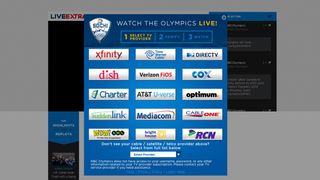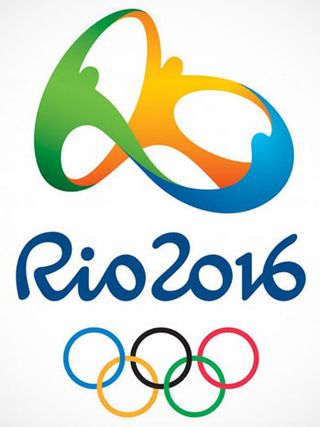Winter Olympics: 4.8 Million TVE Devices Verified for Sochi Fare

With over 225 multichannel providers offering verification for their subscribers, the success rates for authentication and the number of video viewers on various devices jumped substantially with NBCUniversal’s coverage from the Sochi Olympics.
Topped by the record-setting 2.12 million unique users that live-streamed the men’s ice hockey semifinal between the U.S. and Canada on Feb. 21, NBCOlympics.com and NBC Sports Live Extra app counted 24.6 video viewers -- 160% more than the 2010 Vancouver Winter Games and 8% higher than the 2012 London Games. That’s an impressive total considering that the Summer Olympics offer significantly more action than their Winter counterparts: there were 302 medal competitions in London versus 98 in Sochi, with NBCU’s digital presentations reflective of that differential – 3,500 hours in 2012 compared with 1,000 hours this past February.
Gary Zenkel, president of NBC Olympics, said “we were very happy with the performance of the Sochi Games overall,” and he gave the company an “A” on its report card for the strategy of using digital to drive viewers to primetime and the company's cable channels, including record-setting daytime performances on NBCSN.
The underpinnings for those performances, Zenkel said, are tied to the MPVD community’s increasing embrace of “TV Everywhere” platforms that provided cable, satellite and telco subscribers with the capabilities of watching Olympic content “where and when they want to on multiple devices.”

Ron Lamprecht, executive vice president, NBCUniversal Digital Distribution, said the fact that more people watched the U.S.-Canada games on TVE-verified devices than Super Bowl XLVI, which didn’t require authentication, “sums it all up. We still have a lot of work to do in explaining how it works and its benefits, but the hockey game was really a milestone for TVE.”
Lamprecht noted that NBCU plans to take lessons learned from Sochi and apply that knowledge to its suite of news, sports and entertainment networks that really only entered the TVE arena -- featuring simulcasts and flanking video-on-demand content -- within the past year. “The Olympics, in many ways, will serve as a launch pad for TVE across our portfolio,” he said.
All told, NBCU reported that 4.8 million devices were successfully verified during the Sochi Games, at a 54% success rate. That marked 50% amelioration from the 36% success rate during the London Games.
Multichannel Newsletter
The smarter way to stay on top of the multichannel video marketplace. Sign up below.
Both executives pointed to in-home, auto-verification as a key authentication facilitator: Subscribers of Comcast Xfinity, Cox Communications, Cablevision’s Optimum TV and Midcontinent Communications were automatically verified within their homes. These providers recognized the device’s IP address and cross-referenced those addresses with subscriber accounts to automatically check their video subscriptions.
As such, in-home auto verification increased success rates on average by 18% -- distributors not offering this benefit posted a 43% conversion ratio.

Temporary passes also served as key drivers of TVE usage and consumption. Customers were issued a temporary 30-minute pass upon their first visit during the Olympic Games, affording them the ability to watch the event they wanted and verify their subscription at a later time; from there, five-minute passes were granted on subsequent days.
According to NBCU officials, almost three-quarters (73%) of total verifications were initiated via a temporary pass, while over four-fifths (81%) of the temporary passes dispensed were of the initial 30-minute variety.
Zenkel said NBCU deployed a different temporary pass strategy in Sochi. “During London, information was required initially that may have caused people to say ‘I’ve missed the event I wanted to see’ and then they moved on. In Sochi, people saw video from the outset.”
Lamprecht also noted that in London, the first pass extended for four hours, noting that the company will “continue to experiment with finding the right mix going forward.”
He said that "single-pass, sign-on" enabled users to register once, allowing them to watch Sochi fare across their varied devices over the course of the Games. That facility, though, has masked to some extent the total number of devices that were in play during Sochi. Lamprecht said he “doesn’t have a way to quantify those numbers,” which he believes represents a substantial group of users who deployed multiple devices to engage with the Games.
The Sochi Games also pushed a lot of VOD content through various set-top-boxes. NBCU made Olympic highlights, full-event rewinds and the Olympic Ice figure skating show available via its distributors’ on-demand platforms services. In all, there were more than 170 full-event encores, and 690 shorts, including 45 assets in Spanish, that were run by more than 60 distributors.

This array of content prompted upward of 14 million transactions from over 3.3 million STBs. Moreover, there were over 30 million advertising and promotional impressions made via dynamic ad insertion.
“Certainly, this was the biggest VOD volume around Winter Games, with content pieces in standard- and high-definition, “said Lamprecht. “The competition was on TV and there was a rapid turnaround: ten to fifteen minutes later that event was on the set-top boxes. There was a lot of sausage-making, but we gave people a lot to watch and they did.”
Looking ahead to the 2016 Summer Games, Zenkel stopped short of making specific predictions for Rio “because the world will change three times over by then. But we’re very bullish about the Olympics’ overall prospects from the continued delivery of digital content pushing to live telecasts in primetime. We expect to see continued growth."
